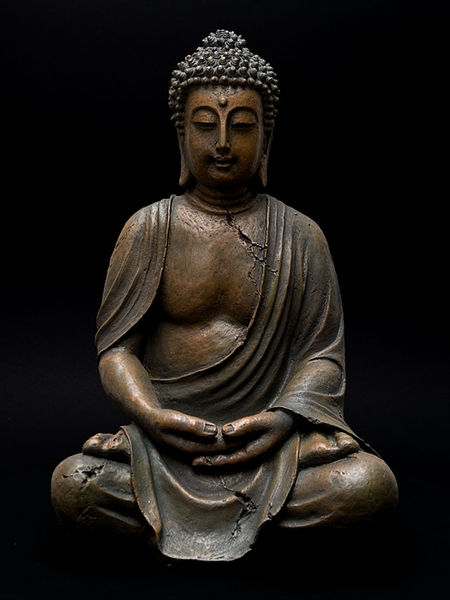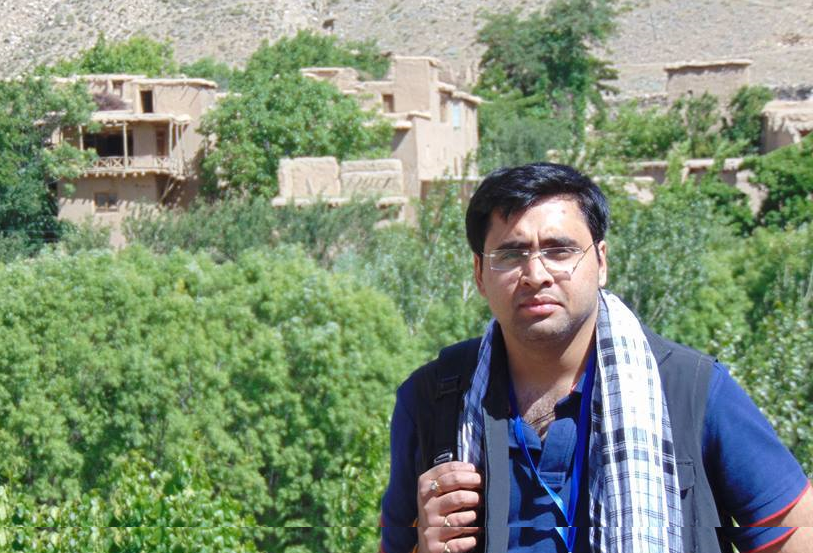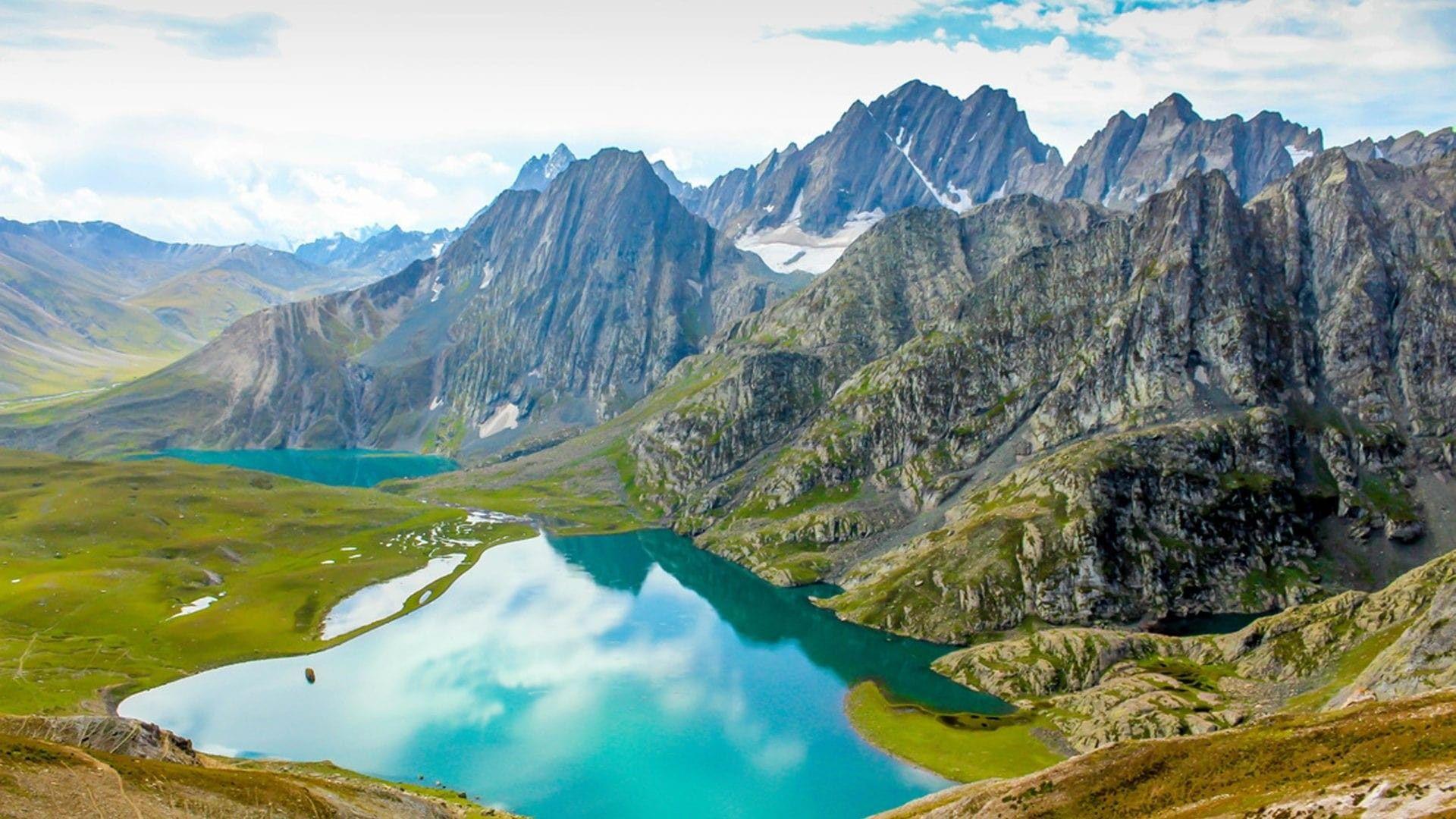Recently, a deadly series of clashes occurred on the Durand Line between Taliban fighters and the Pakistani Army. The disputed 1,600-mile border be
Echoes of the Buddha in Kashmir: The Forgotten Path to Unity. By Farooq Ganderbali

Kashmir, the land of saints and sages, has always been a cradle of spirituality and intellectual enlightenment. Among the many faiths that blossomed in this paradise, Buddhism holds a special and deeply rooted place. It was in this very valley that Buddhist philosophy reached its peak of scholarship, art, and compassion — making Kashmir a sacred center of learning that influenced not only India but also Central Asia, China, and Tibet.
A Glorious Past of Peace and Wisdom
Buddhism’s origins in Kashmir go back to the time before the Christian era. Tibetan sources suggest that Buddhism reached the valley even before Emperor Ashoka, who later adopted and spread it with zeal. Under Ashoka’s reign, Srinagar was founded, viharas (monasteries) were built, and 500 monks were brought to teach the message of peace and compassion. The valley soon turned into a beacon of Buddhist learning, where pilgrims and scholars from across Asia came to study and carry back the light of knowledge.
Kashmir became a vital link in the transmission of Mahayana and Vajrayana Buddhism, hosting some of the greatest minds like Nagarjuna, Vasubandhu, and Asanga. Their philosophical works, such as Mulamadhyamakakarika and Abhidharmakosha, explored the deepest truths of existence — emptiness, compassion, and interconnectedness — which later shaped the very foundations of Tibetan Buddhism.
Cultural Footprints in Art and Architecture
The influence of Buddhism is still visible in Kashmir’s architecture across three distinct periods. The Indo-Parthian architecture of Harwan (near Srinagar), the Gandhara-style remains of the Kushana ruler Huvishka in Ushkur (Baramulla), and the Gupta period sculptures at Pandrethan near Srinagar together narrate a story of aesthetic and spiritual harmony.
Still today, different places in Kashmir — like Harwan Srinagar with its ancient brick stupa at the Harwan Monastery — stand as silent witnesses to the valley’s Buddhist past. The intricate terracotta tiles found there, depicting lotus motifs and human figures, reflect the artistic brilliance and spiritual refinement of that era.
One of the most remarkable sculptures from Pandrethan is that of Mahamaya, the mother of Buddha, shown moments before his birth. Her earring — Dajeharu — is still worn by married Kashmiri Pandit women today, symbolizing the unbroken thread between Kashmir’s Buddhist and Hindu traditions.
Decline and Survival
Buddhism thrived in Kashmir for nearly a thousand years until the ninth century CE, after which it began to decline with political and religious upheavals. During the medieval period, many monasteries were destroyed and monks migrated to Ladakh and Tibet. Yet, even in decline, the spirit of Buddhism survived, shaping the culture, language, and tolerance of the Kashmiri people. Emperor Akbar’s chronicler, Abul Fazl, even noted meeting old Buddhist laymen in Kashmir during the 16th century — a testament to the endurance of this faith.
The Call for Revival and Unity
Today, as Kashmir steps into a new era of peace and progress, there is a growing realization of the need to revive its ancient Buddhist culture — a culture rooted in love, understanding, and unity. The teachings of Lord Buddha remind us that true peace begins in the heart and extends to the community.
Reviving Buddhist heritage in Kashmir is not merely about restoring monuments; it is about reawakening a moral and spiritual consciousness that once made this valley a symbol of tolerance and brotherhood. This revival can bridge religious divides, strengthen cultural identity, and remind all communities that Kashmir’s strength has always been its unity in diversity.
A Path Toward Harmony, Heritage, and Hope
The revival of Buddhist thought and culture offers Kashmir a powerful path toward harmony and reconciliation. The values of Ahimsa (non-violence), Karuna (compassion), and Maitri (friendship) can guide a new generation toward peaceful coexistence. By honoring this shared past, Kashmir can once again become a valley of compassion and wisdom, where every faith and culture coexist in mutual respect.
Moreover, restoring and preserving ancient Buddhist sites like Harwan, Ushkur, and Pandrethan can open new avenues for cultural tourism, inviting scholars, pilgrims, and travelers from around the world. Such efforts will not only boost the economy but also showcase Kashmir as a land where heritage and harmony walk hand in hand.
(Farooq Ganderbali President Voice for Peace and Justice @farooqgbly)
A Glorious Past of Peace and Wisdom
Buddhism’s origins in Kashmir go back to the time before the Christian era. Tibetan sources suggest that Buddhism reached the valley even before Emperor Ashoka, who later adopted and spread it with zeal. Under Ashoka’s reign, Srinagar was founded, viharas (monasteries) were built, and 500 monks were brought to teach the message of peace and compassion. The valley soon turned into a beacon of Buddhist learning, where pilgrims and scholars from across Asia came to study and carry back the light of knowledge.
Kashmir became a vital link in the transmission of Mahayana and Vajrayana Buddhism, hosting some of the greatest minds like Nagarjuna, Vasubandhu, and Asanga. Their philosophical works, such as Mulamadhyamakakarika and Abhidharmakosha, explored the deepest truths of existence — emptiness, compassion, and interconnectedness — which later shaped the very foundations of Tibetan Buddhism.
Cultural Footprints in Art and Architecture
The influence of Buddhism is still visible in Kashmir’s architecture across three distinct periods. The Indo-Parthian architecture of Harwan (near Srinagar), the Gandhara-style remains of the Kushana ruler Huvishka in Ushkur (Baramulla), and the Gupta period sculptures at Pandrethan near Srinagar together narrate a story of aesthetic and spiritual harmony.
Still today, different places in Kashmir — like Harwan Srinagar with its ancient brick stupa at the Harwan Monastery — stand as silent witnesses to the valley’s Buddhist past. The intricate terracotta tiles found there, depicting lotus motifs and human figures, reflect the artistic brilliance and spiritual refinement of that era.
One of the most remarkable sculptures from Pandrethan is that of Mahamaya, the mother of Buddha, shown moments before his birth. Her earring — Dajeharu — is still worn by married Kashmiri Pandit women today, symbolizing the unbroken thread between Kashmir’s Buddhist and Hindu traditions.
Decline and Survival
Buddhism thrived in Kashmir for nearly a thousand years until the ninth century CE, after which it began to decline with political and religious upheavals. During the medieval period, many monasteries were destroyed and monks migrated to Ladakh and Tibet. Yet, even in decline, the spirit of Buddhism survived, shaping the culture, language, and tolerance of the Kashmiri people. Emperor Akbar’s chronicler, Abul Fazl, even noted meeting old Buddhist laymen in Kashmir during the 16th century — a testament to the endurance of this faith.
The Call for Revival and Unity
Today, as Kashmir steps into a new era of peace and progress, there is a growing realization of the need to revive its ancient Buddhist culture — a culture rooted in love, understanding, and unity. The teachings of Lord Buddha remind us that true peace begins in the heart and extends to the community.
Reviving Buddhist heritage in Kashmir is not merely about restoring monuments; it is about reawakening a moral and spiritual consciousness that once made this valley a symbol of tolerance and brotherhood. This revival can bridge religious divides, strengthen cultural identity, and remind all communities that Kashmir’s strength has always been its unity in diversity.
A Path Toward Harmony, Heritage, and Hope
The revival of Buddhist thought and culture offers Kashmir a powerful path toward harmony and reconciliation. The values of Ahimsa (non-violence), Karuna (compassion), and Maitri (friendship) can guide a new generation toward peaceful coexistence. By honoring this shared past, Kashmir can once again become a valley of compassion and wisdom, where every faith and culture coexist in mutual respect.
Moreover, restoring and preserving ancient Buddhist sites like Harwan, Ushkur, and Pandrethan can open new avenues for cultural tourism, inviting scholars, pilgrims, and travelers from around the world. Such efforts will not only boost the economy but also showcase Kashmir as a land where heritage and harmony walk hand in hand.
(Farooq Ganderbali President Voice for Peace and Justice @farooqgbly)
You May Also Like
Despite right to health and gender equality being fundamental human rights, the world is off the track from delivering on these goals in next 62 mo
Introduction
The date 22 October 1947 will forever remain a Black Day in the history of Jammu and Kashmir. On this day, Pakistan, i

"Trial of Pakistani Christian Nation" By Nazir S Bhatti
On demand of our readers, I have decided to release E-Book version of "Trial of Pakistani Christian Nation" on website of PCP which can also be viewed on website of Pakistan Christian Congress www.pakistanchristiancongress.org . You can read chapter wise by clicking tab on left handside of PDF format of E-Book.







